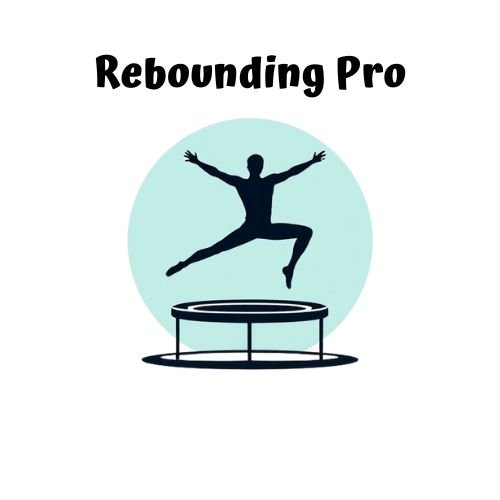Support your pregnancy bump when you notice stretching, pelvic heaviness, or balance issues—not just by trimester. Choose a band that positions under your bump rather than compressing from above, with adjustable features that grow with you. Wear it during low-impact activities, keeping sessions to 10-15 minutes with frequent breaks. Listen to your body and adjust or remove the support if you experience pain or discomfort. Discover how proper belly support can transform your pregnancy journey.
When to Start Using Belly Support During Pregnancy Trampoline Workouts

When should you introduce belly support for trampoline workouts during pregnancy? Rather than following a universal trimester rule, listen to your body’s signals.
You’ll need support when you notice abdominal stretching, pelvic heaviness, visible coning during exercises, or balance difficulties due to your shifting center of gravity.
Don’t wait for discomfort to become severe. As your pregnancy progresses beyond the second trimester, added support becomes increasingly important to protect your expanding abdomen and pelvic floor.
Prioritize prevention over reaction—your growing baby and pelvic floor deserve proactive support well before pain signals problems.
If you experience urinary leakage during jumps or persistent lower back pain after workouts, it’s definitely time for support.
Before starting any trampoline routine, consult your OB-GYN or pelvic floor specialist, especially if you’ve had prior complications.
Always ensure your rebounder has a secure handlebar installed for stability, as balance issues are common during pregnancy.
Prioritize non-bouncing movements initially if you lack proper support.
Best Support Bands for Low-Impact Rebounding While Pregnant
Three essential qualities define effective support bands for pregnancy rebounding: flexibility, proper positioning, and adequate pressure distribution.
The Upsie Belly® Maternity Support Band excels in all three areas with its bamboo viscose fabric and SecureStretch™ technology that prevents roll-down during movement.
When rebounding, you’ll need a band that supports from below rather than compressing from above.
Look for a 12-inch adjustable design that grows with your pregnancy and features an anti-dig fastening system.
Always pair your band with stable, shock-absorbing mini-trampolines—never full-sized models.
Remember to consult your OB/GYN before combining support bands with rebounding exercises, and limit sessions to 10-20 minutes with frequent breaks. Individual considerations are essential when determining if rebounding is appropriate for your unique pregnancy journey.
Adjust band tension every 15 minutes as your weight distribution shifts during activity.
Proper Band Positioning for Maximum Stability on Mini Trampolines

Correct positioning of your pregnancy belly band creates the foundation for safe mini trampoline exercises. Position the band firmly under your bump for maximum support without restricting movement or breathing. Your band should feel secure but never uncomfortable.
When on your mini trampoline, adjust the band to maintain your center of gravity as you perform low-impact exercises like lateral lunges and gentle knee bends. Remember, bouncing isn’t recommended during pregnancy—focus instead on static movements with your band providing steady support.
Ensure the band distributes weight evenly across your back to relieve pressure and pain. The optimal design includes twelve inches of adjustability to accommodate your growing belly throughout each trimester. Keep your core engaged while maintaining proper alignment.
If you’re experiencing any discomfort, readjust immediately. The right positioning will boost your confidence and stability, allowing you to safely continue gentle exercise throughout your pregnancy.
Monitoring Your Body: Signs to Adjust or Remove Belly Support
Listening to your body’s signals provides the most reliable guidance for when to adjust or remove your pregnancy belly support. Pay attention to discomfort, circulation issues, or any warning signs that require immediate action. Some individuals may experience discomfort due to the moisture retention that commonly occurs with belly bands.
| Warning Sign | Action Needed | Urgency Level |
|---|---|---|
| Round ligament pain | Reposition band for better weight distribution | Moderate |
| Heartburn or indigestion | Loosen band or remove temporarily | Moderate |
| Restricted circulation/swelling | Remove immediately | High |
| Dizziness or severe headache | Remove and contact healthcare provider | Emergency |
| Persistent discomfort | Adjust fit or consult healthcare provider | Moderate |
Never wear your belly band overnight unless specifically recommended by your healthcare provider. For high-intensity activities, adjust the tightness accordingly, and always remove support if you experience any signs of restricted circulation or breathing difficulty.
Combining Breathable Support With Safe Rebounding Techniques

Maintaining your activity level during pregnancy can be both beneficial and enjoyable when done safely. When using a mini-trampoline for gentle exercise, pair it with a breathable belly band that offers support without restriction.
Gentle rebounding with proper support can keep you active and comfortable throughout your pregnancy journey.
Choose bands with moisture-wicking fabrics and mesh panels to prevent overheating during your workout.
For safe rebounding while wearing your support band:
- Limit sessions to 10-15 minutes initially, using only gentle, rhythmic bouncing motions
- Wear supportive shoes with non-slip soles to enhance stability on the trampoline
- Maintain neutral spine posture to reduce ligament stress and prevent injury
- Stay hydrated and schedule activities during cooler parts of the day
Remember to check your band’s fit mid-session and stop immediately if you experience any discomfort. The support band will improve your posture by lifting the baby off your hips and supporting your lower back during exercise.
Frequently Asked Questions
Can Belly Bands Hide My Pregnancy in Early Stages?
Belly bands aren’t designed to hide your pregnancy in early stages. They’re primarily for support rather than concealment. You’ll find loose-fitting clothing more effective for hiding your bump during early pregnancy.
Will Using a Belly Band Prevent Stretch Marks?
No, belly bands won’t prevent stretch marks as they don’t affect the dermal layers where stretch marks form. They provide support and comfort but lack scientific evidence for stretch mark prevention despite some marketing claims.
Can I Wear a Support Band During Water Activities?
It’s not recommended you wear a support band during water activities. They’re not designed for water use and may become uncomfortable when wet. Instead, try swimming exercises that naturally support your bump.
How Do Belly Bands Affect Fetal Movement Monitoring?
Properly fitted belly bands stabilize monitoring sensors on your abdomen, improving fetal movement detection accuracy. They won’t restrict your baby’s movements, but they’ll help capture data consistently even when you change positions during monitoring.
Should I Wear My Belly Band Differently for Twin Pregnancies?
Yes, for twins you’ll need to adjust your belly band differently. Position it lower to lift your bump, use wider bands for extra support, and start wearing it earlier (16-20 weeks). Take more frequent breaks between uses.
In Summary
You’ve now got all the tools to safely support your pregnancy bump during trampoline workouts. Remember, you’ll need the right band, proper positioning, and constant body awareness. Don’t ignore discomfort—it’s your signal to adjust or stop. With breathable support and correct rebounding techniques, you can enjoy low-impact exercise throughout your pregnancy. Always check with your doctor before starting any new fitness routine.





Leave a Reply